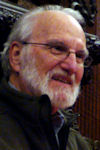Linda Lappin’s compelling novel offers a Chinese box of mysteries, one inside
another and all parts of a larger whole. Each box is pried open as the story drives
toward its resolution. But the question is, will one box be more crucial than the
others, exposing unexpected answers that rearrange all our assumptions? Will certain
characters be revealed as existing in an external box that hides the internal? It’s
to Lappin’s great credit that she creates such an intriguing and substantial
world.
Set in the 1920s in a fictitious Italian province called Tuscia, an area much more
primitive in landscape and beliefs than, say, the supposedly nearby Tuscany, the
tale is told by a woman-of-a-certain-age (her term for herself) mystery novelist
named Daphne DuBlanc. Born and raised on an English estate that was driven into
debt by her late improvident brother, and now widowed, penniless, and drug-dependent,
Daphne finds herself in a remote and dilapidated Italian villa rented by her publisher,
Nigel, ordered to write another of the mystery novels that have become her means
of support, meager as that support is. With her are the homosexual Nigel; a handsome
but seemingly talentless Texan painter named Clive; a young Roman called Danilo;
American Professor Finestone, from whom Nigel has rented a section of the villa;
the unkempt Manu, who acts as a handyman; Manu’s strange apparent daughter,
Amelia, sadly wanting as a cook and cleaner but alluring to several of the males;
and Amelia’s scrawny, rheumy-eyed white cat. So we have a mystery writer trying
to create a new work in the midst of a group of enigmatic people living on an estate
adjacent to an overgrown park of hellish Renaissance sculptures called the Sacred
Wood. At first the gate to the wood is locked, but once opened, it gives an entry
to a foreboding and treacherous landscape.
While the people and the unpredictable actions around them are sources of unknowns,
at least from the perspective of Daphne, who often finds herself threatened and
disoriented, the villa itself, lit only by candlelight, is a place of many shadows,
hidden passageways, strange noises, crumbling walls, and rare art of great worth.
People and forces can emerge from the darkness or literally drop out of the ceiling.
The Sacred Wood exists as an overt mystery, subject of a monograph Professor Finestone
says he is writing on his clacking typewriter. He hints at the role of a major Renaissance
artist in the creation of the wood, claiming his findings will lead to a revolution
in art history, but offering nothing of his work’s content. The sculptures
have to be literally uncovered as the tangle of overgrown vegetation is hacked away.
Deadly poisonous vipers lurk. Words in Latin and Italian must be decoded, as does
a drawing of the grounds from the 1500s that Daphne finds coated with filth in her
room.
When summarized, all this may sound like a Gothic melodrama. It’s Lappin’s
skill as a writer, however, that makes the story perfectly plausible, its world
quite real, grounded in the excellent concreteness of her prose. The voice of Daphne’s
telling has an authentic 1920s quality. Consider this passage chosen at random:
“I found the professor standing at the parapet of the terrace, surveying the
park, where we could see three young men industriously at work under Manu’s
supervision, hacking at the ivy with axes and scythes. Finestone looked like one
of the workmen himself, for he was wearing blue overalls which starkly set off the
gingery color of his beard...”
The qualities that unite the Chinese boxes of the novel may be found in Daphne’s
theory of signatures:
We are constantly immersed in a network of signs and symbols whose meaning eludes
us, but which, if only we could read them, would reveal every detail of our past
and even predict our future. Like anticipatory echoes, they tingle in our consciousness,
building a crescendo until the event they herald becomes fully manifest.
The challenge is to attain “a stimulated, heightened attention” that
allows us to read them. Throughout the novel Daphne gathers a disparate collection
of objects she knows are signatures, though she is exasperated by her inability
to fathom their meaning—cigarette ends, a doll’s head, a swatch of cloth,
a pearl button. At the novel’s climax, she experiences a thrill of illumination.
She grasps the underlying design: “It all made perfect sense.” The
pleasure for the reader is joining with Daphne as she reaches that crescendo.

Photograph by
Minna Proctor
|
is co-publisher of Serving House Books and a faculty member in Fairleigh Dickinson
University’s MFA in Creative Writing Program. His most recent short story
collection, The Lost Ones, was published in 2012.
Cummins has published more than 100 stories in such magazines as Kansas Quarterly,
Other Voices, Crosscurrents, Florida Review, South Carolina Review, Green Hills
Literary Lantern, Virginia Quarterly Review, Bellevue Literary Review, Arabesques,
and Confrontation, and on the Internet. He also has published memoirs,
essays, articles, and reviews.
www.waltercummins.com